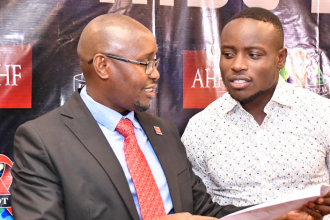Kenya risks rolling back the gains made in HIV/AIDS response in the country if the issue of condom shortage in the country is not addressed, the Civil Society Organisations (CSOs) in the health sector have cautioned. Over the years, HIV and AIDS prevalence has decreased from a peak of 10.5 percent to lows of 5 percent in the recent years.
Total new HIV infections are estimated to have declined in the last seven years; from about 116,000 in 2009 to around 45,000. CSOs cautioned of a possibility of a new wave of infections citing a budgetary gap in the purchase of condoms. They noted that the Kenyan Government was procuring 150 million pieces against a forecasted demand of 262 million for the July 2022 to June 2023 financial year.
They noted that this was not the first time Kenya is in the grip of dire countrywide shortage of condoms amid rising cases of teenage pregnancy, HIV/Aids among the youth and resurgence of sexually transmitted illnesses. The CSOs noted that there has been a rapid increase in HIV infections among adolescents and young people and the disruption of the HIV prevention, care, and treatment services by the Covid-19 pandemic.
Speaking ahead of the commemoration of World AIDS Day, Dr Samuel Kinyanjui, the AIDS Healthcare Foundation (AHF) Kenya Country Director noted there is a gap of about 112 million condoms, which translates to a budgetary hole of about Ksh38 million, at a unit cost iof pproximately Ksh3.4 per condom.
“We are urging the government to come up with a mechanism of stemming the acute shortage of condoms that has now become routine. We are calling on the government to come up with modalities of bringing down the prevailing high taxes against those willing to step in and help the country restock,” said Dr. Kinyanjui.
Dr. Kinyanjui also emphasised that condoms must be viewed as an investment and not a cost. “Statistically, with enough condoms, the country will be saved from treating more than 800,000 newly infected persons in the next ten years and up to 5.3 million unplanned pregnancies, 60% of which are teenage, will be averted,” he said, adding that the cost of treating one infected person every year is about Kshs. 30,000/=, and this can be avoided.
A spot check of many public health facilities, offices, hotels, and restaurants confirms they have had no condoms in their dispensers for a prolonged period. What has partly occasioned this shortage is the heavy taxation of the commodity in a country where free condom programmes are mainly donor-funded
Currently, the aggregate tax regime slapped on condom procurements is Shilling for a shilling. It is the high time Kenya’s political leadership addresses the condoms shortage issue, ARVs, teen pregnancies and Sexually Transmitted Infections (STIs).
“Why do we have to tax commodities donated free of charge? Going down this road will only wreak havoc in a country that is unable to fund our health system. We should decide whether we want condoms or taxes because once the donors withdraw, then we are doomed,” said Dr Kinyanjui.
Up to 75% of funds for HIV, TB, and malaria programmes come from donors. This situation is unfortunately changing since Kenya is now ranked as a middle-Income country by the World Bank and IMF, hence indications of reducing donor funding has been experienced over the past few years.
AIDS is the leading cause of death and morbidity among adolescents and young people in Kenya. It is estimated that 51 percent of all new HIV infections in Kenya are among adolescents and youth. “Need I emphasize that the male latex condom remains the single, most efficient, available technology to reduce HIV and other sexually transmitted infections,” said Dr Ferdinand Omanyala, the AIDS Healthcare Foundation Kenya Youth Ambassador
As the search for more preventive technologies such as HIV vaccines and microbicides gathers pace, condoms remain the core preventive measure for many Kenyans. There is a heightened need for targeted interventions to help Kenyans access condoms, even as they use other HIV/AIDS infection prevention strategies.
Prevention remains the mainstay of the response to HIV/AIDS. United Nations Population Fund posits that condoms are an integral and essential part of comprehensive prevention and care programmes, and their promotion must be accelerated. The agency has in the past advocated for the universal availability of condoms, either free or at low cost, and promoted in way is that help overcome social and personal obstacles to their use.
“It’s Not Over” said Jerop Limo, Executive Director, Ambassador for Youth and Adolescent Rep Health Programme (AYARHEP) in her bid to remind world leaders, global public health institutions, and civil society that much work remains if we are to one day end the AIDS epidemic. Reports indicate that the world is worryingly off-track in reducing new infection and mortality rates – which means we all must redouble our efforts because millions of lives hang in the balance.









